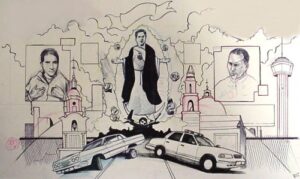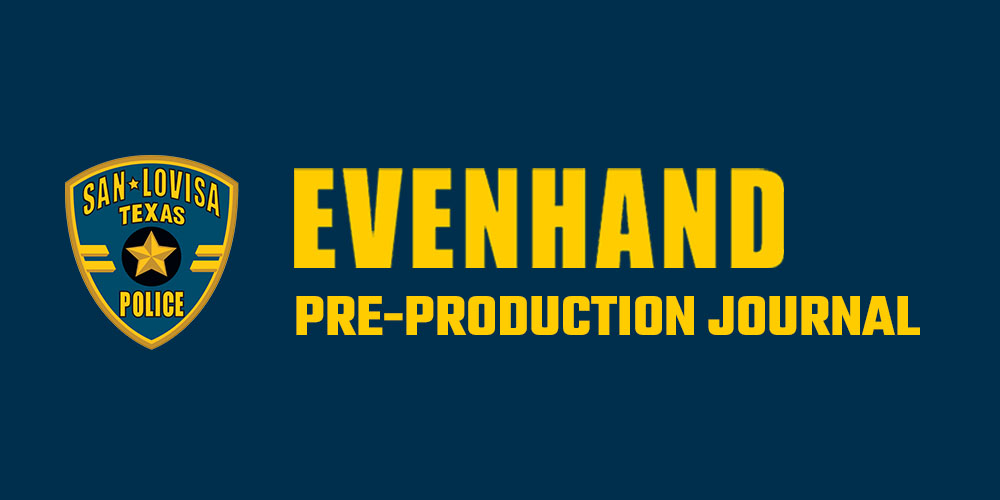
Nino Fidencio Constantino was a healer who lived in Mexico during the 1920’s. He was evidently somewhat eccentric, often dressing as the Virgin of Guadalupe. But he was also widely renowned throughout Mexico for his healing powers. At huge rallies his devotees would sometimes pass him from hand to hand overhead, giving all an opportunity to touch him.
Fidencio died when doctors, thinking him already dead, began an autopsy. It turns out he had assured his followers that he would enter into a three day trance while asking God what his mission would be. Detecting no pulse, the doctors cut a major artery only to discover, too late, that he was not dead after all.
* * * * * *
We have a series of scenes in the EvenHand screenplay that call for a group of kids to paint a mural on the side of a neighborhood building. At the beginning of our story, the wall will be seen covered with graffiti. Soon after, we will see the kids painting the wall white. A little later we will see them sketching the outlines of the mural and finally, at the end of the film, we will see the completed painting.

The Wall
We have engaged the Healy-Murphy Center, a local community organization that works with neighborhood kids, to find and supervise the artists that will design and paint the mural. Since we need to see the various stages of the painting within the framework of the story and its characters, the actual execution of the painting must take place in real time as we film. We will schedule scenes to be shot on that corner periodically throughout production.
Fidencio enters into the story for a couple of reasons. He first came to my attention because the owner of the building on which we will paint the mural happens to be making a documentary film about him. This led to a discussion with Fernando about his importance in the Latino community in which we will be doing much of our filming. For that reason especially, it seemed appropriate to find a way to incorporate his image and spirit into our mural. The notion of a healer becoming a prominent figure in the mural was also appealing because a plotline in the film involves a conflict between one of the police officers (Morning) and a kid from the neighborhood (Toby). While their relationship ends in tragedy, I want the mural to represent the promise of reconciliation.

Here’s a draft of the mural design
The EvenHand mural is a relatively minor and almost entirely visual element of the narrative. But, like every other piece of the puzzle, many hours of thought, meetings and logistical planning must take place to effectively incorporate it into the story.
– Joseph Pierson



